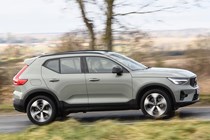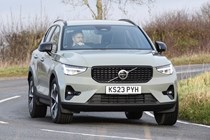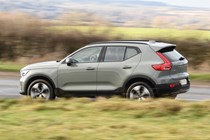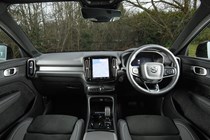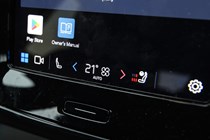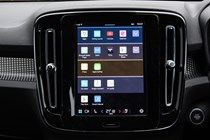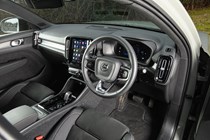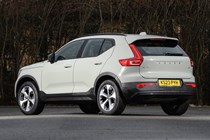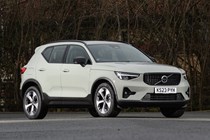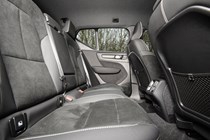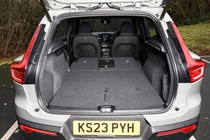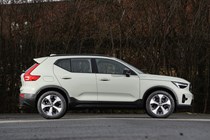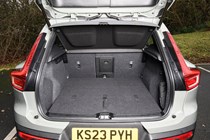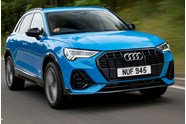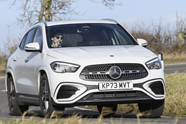
Volvo XC40 review
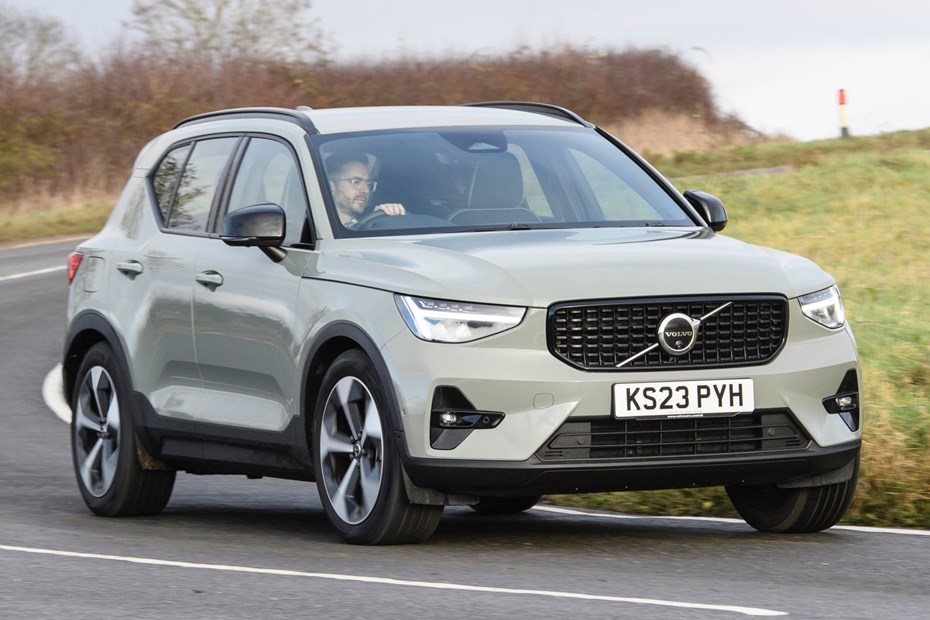
At a glance
| Price new | £36,840 - £46,890 |
|---|---|
| Used prices | £10,728 - £39,183 |
| Road tax cost | £195 - £620 |
| Insurance group | 18 - 33 |
Get an insurance quote with

|
|
| Fuel economy | 31 - 52.3 mpg |
| Range | 463 - 665 miles |
| Miles per pound | 4.5 - 6.7 |
| Number of doors | 5 |
| View full specs for a specific version | |
Available fuel types
Petrol
Diesel
Hybrid
Pros & cons
- Lots of safety technology
- Practical and plush interior
- Comfortable ride and seats
- Not that fun to drive
- Mild-hybrid petrol models quite thirsty
- Limited engine range
Volvo XC40 SUV rivals
Overview
If the aggressive styling and firm rides of sportier rivals don’t appeal, may we suggest the Volvo XC40? Its softly-softly approach delivers a calming experience as the miles comfortably roll by. You get plenty of standard equipment, a high quality interior and it’s practical, too. Being a Volvo, it’s also impressively safe in a crash, and has plenty of tech to prevent that happening in the first place.
It’s certainly a tempting choice and one of the best SUVs if you must have a premium badge. It was launched in 2017 and has been available with a range of petrol, diesel and plug-in hybrid powertrains. In 2020, the XC40 led the charge for Volvo’s electrification strategy, ditching diesel power altogether.
Plug-ins have come and gone, leaving a choice of two mild-hybrid petrol engines. If you want four-wheel drive, you’ll need to go fully electric with the Volvo EX40 (formerly XC40 Recharge).
The XC40 has plenty of rivals. The Germans offer the most obvious competition in the shape of the Audi Q3, BMW X1 and Mercedes-Benz GLA. However, there are cars such as the Range Rover Evoque and the MINI Countryman also vying for your attention in this price bracket.
The XC40’s trim structure is simple. It’s separated into three options called Core, Plus and Ultimate. Volvo’s Core specification is only available on the least powerful engine and comes with 18-inch alloy wheels, automatic LED headlights, rear parking sensors, a wireless smartphone charger and a 9.0-inch infotainment system with built-in Google maps.
Plus and Ultimate specifications are homogenised across the XC40’s engine range. Plus models aren’t too much pricier, adding LED fog lights, all-round parking sensors, a rear-view camera and a handsfree tailgate. Inside, you get heated front seats, a heated steering wheel, an electrically adjustable driver’s seat and a heated windscreen.
The Ultimate versions are better equipped still, featuring 19-inch alloy wheels, a panoramic glass sunroof, a 360-degree parking camera, an excellent adaptive cruise control system, headlight washers and rear privacy glass. The cabin also gets a lift with a 12-speaker Harman Kardon stereo.
Since it went on sale, we’ve driven dozens of examples, and have really got under the skin of the XC40 over the years to deliver an expert verdict. In addition, in Adam Binnie’s long-term test we put the XC40 through its paces over several months. So, over the next few pages we’ll let you know exactly what it’s like to drive, how spacious it is and what it’ll cost to run.
But is the XC40 a premium small SUV we’d actually recommend? You can find out more about how we test on Parkers via our dedicated explainer page. But in the meantime, read on to find out all you need to know.



